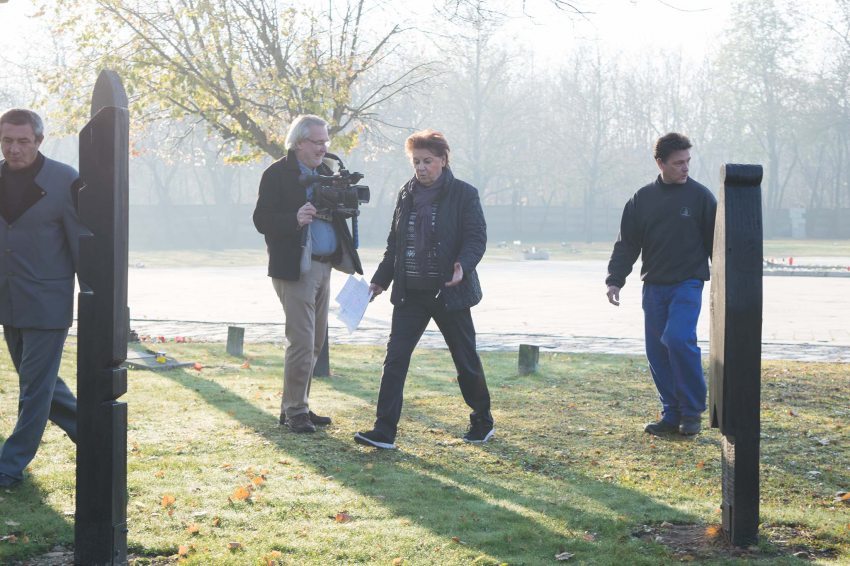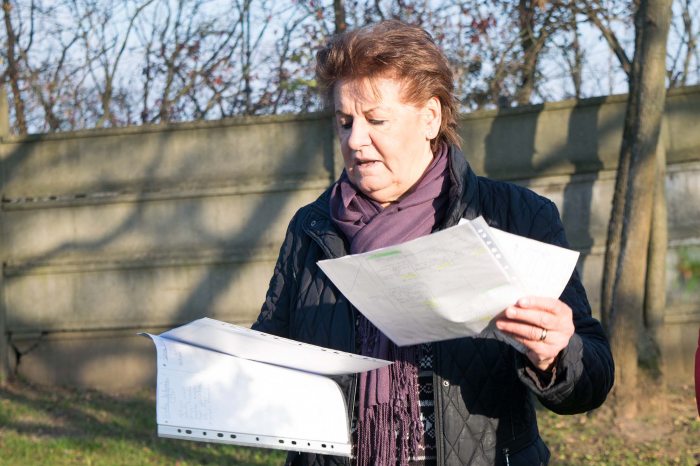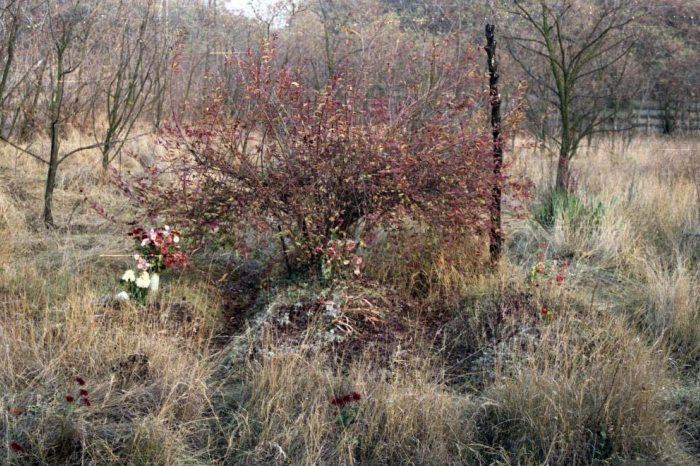“As far as I am concerned, there are no ‘lesser’ dead and ‘greater’ dead, there are only people” – Interview with forensic anthropologist Dr. Éva Susa
The work of forensic pathologist Dr. Éva Susa has given more than 100 families the opportunity of closure in a worthy manner for their relatives who were executed during the Rákosi and Kádár dictatorship or who died in prison and were buried in unmarked graves. However, her name is associated not only with relatively recent political victims but also with the excavation of the mummies found in Vác and identification of bodies in the Kálvin Square and Máriabesnyő Grassalkovich crypt.

How does somebody become a forensic anthropologist?
“In my case, this was far from being a planned decision, I became this almost by accident. In Hungary, there is a course in cultural anthropology; physical anthropologists dealing with the physical characteristics of the human body are trained at ELTE university. I wanted to be a teacher so my basic qualification is as a secondary school teacher specialized in biology and chemistry. At that time, there were extremely knowledgeable teachers at the natural sciences faculty of ELTE, we received an excellent grounding, we were taught to think scientifically besides getting a very thorough knowledge of the core subjects.
“I became involved with anthropology at university, I wrote my thesis on twin research at the Anthropology Department of ELTE. After graduating, I taught biology at a primary school for a short while, then I received the call: the Hungarian Institute for Forensic Sciences in Budapest was looking for an anthropologist. In 1975, I started to work here, where I was dealing with examinations to establish parentage. At that time DNA testing did not exist, thus blood group examinations and so-called physical anthropology tests were carried out on the mother, the child, and the presumed fathers. In 2002, I was appointed director of the forensics system and I ran this institute until my retirement in 2016.”
When were you first involved with Hungarian history as a forensic expert?
“1989 was a turning point in my life, too. Rumours that there would be exhumations started going around in our institute at the beginning of the year. The then Ministry of Justice initiated the establishment of a research group comprising an archaeologist, anthropologist, and forensic doctors. Preparations got underway in an extremely closed environment.
“I recently wrote a detailed book on the exhumations themselves and the work of my colleagues titled Megkésett végtisztesség (Belated Obsequies), which was published on the 60th anniversary of the 1956 Revolution.”
What did plot 301 look like in 1989?
“It was overgrown with grass, trees, and flowers. I wrote the following in the blurb to my book: ‘Forensic experts had put their hands into a wasps’ nest when they launched their investigatory works.’ The secret dossier that made it possible to identify the location of the burial places of Imre Nagy and his fellow martyrs was called the Wasps’ Nest.”
Did your field of research radically change after the exhumation of Imre Nagy?
“Yes. My name is not included in the research group conducting the exhumation of Imre Nagy, however, I actively participated in it as a member of staff of the Hungarian Institute for Forensic Sciences. After the reinterment, a second exhumation committee was set up under my direction. Since we received masses of exhumation requests from relatives and the government wanted to fulfill these calls, it was my job to organize the funerary-archaeology excavations and forensic identification of bodies. During this period, we uncovered countless remains, identified them, passed them across to the relatives, who then had them reburied respectfully.”
In other words, the work that is still going on today actually started 30 years ago?
“Thirty years ago, when we began this work, it was like looking for a needle in a haystack. There was no detailed, complete burial declaration about plots 298 and 301, there were no marked graves, just a giant tangled mess. Understandably, there was no record of the system of burials for posterity although today, based on empirical experience of the past 30 years, we know where people were buried in which period. When work started, even this was not known.
“Relatives’ inquiries always pertain to just a single person but the data show correlations. This is why we have collected together a vast amount of information over the years: the existing datasets of the two plots, prison records, we collected all certificates of death from the period where there was a penitentiary institution or an institution belonging to a state security authority. But we were also in Vác, Recsk and Márianosztra. By now our database contains more than 3000 persons.
“They are the men and women who died in prison conditions between 1945 and 1962 – they may have been political prisoners or common criminals – and their place of burial was plot 298 or 301.
“From all this, a database is being established that will contain the datasets – grave by grave – showing the following: who lies there, what we know of the person, where and how he/she died. This is a huge amount of work but there is nobody else in the position to compile it: nobody has as much empirical experience. I am in retirement yet together with my research partner Mária Molnos, who is at the same time my co-author, we have been given an office in the Committee of National Remembrance building, which is the perfect place for synthesizing this work of the past 30 years. Although it is not possible to finish this work because one never knows what else will come up.”
One wall of the office is completely taken up with a map of plots 298–301. What systemization was applied when it came to burying the dead during communism?
“Rákoskeresztúr New Public Cemetery has 301 plots. On the wall, you can see a reconstruction by grave of plots 298 and 301. It is important to know that the wooden markers in the plots do not designate real graves but rather are commemorative policy, visual symbols because there has still not been a full exploration of the two plots. Plot 298 contains the remains of those who died under prison conditions from late 1944 right up to December 1951. The plot started to be used from both ends working inwards, and the two rows met in 1951. The composition of the people interred in this area is extremely mixed. It contains the graves of those who were condemned to death as war criminals in people’s trials. Then victims of the communist dictatorship can also be found here until 1951. Aside from this, the plot was also the burial place of paupers.
This plot was filled by the winter of 1951 and then they started using the adjacent plot 301 where, starting from row 5 of the plot area we know today, they started burying people outwards towards plot 298.
“In the public mind, plot 301 is associated with those executed as reprisals after the 1956 Revolution but this is not a totally accurate picture because this plot was already being used before 1956.”
How many graves are there in the two plots?
“In total, 2155 based on the reconstructed graves. However, quite frequently several bodies lie in a single grave. I mentioned that according to our database it can be presumed that more than 3000 people are actually buried here. But one can also find here the remains of animals used in experiments, body parts after autopsies, and even embryos.”
The communist state apparatus did everything it could to leave as little data as possible about the deceased. What is it that helps in your research and what hinders you?
“At the time of the change of regime, it would have been necessary to conduct a geodesic survey of the cemetery, at that time the earth was still heaped up over the pits and research would have been easier, but unfortunately it did not happen. Since then the surface of the cemetery has been landscaped several times so the surface changed and those parameters that could have assisted the experts disappeared. In 2003, I had a geodesic survey conducted and we still use it to this day. In the life of a researcher, material that may move the work forward can always crop up. Reports had to be drafted continuously in the dictatorship as well, and these reports are of enormous assistance in our work.
“For example, guard reports of prison wardens written by hand and although the style and grammar may be poor, they do represent valuable historical contributions because they give guidance towards successful investigations. Victims could not just be disappeared, ‘losses’ and ‘growths’ were precisely recorded in prisons.
“For example, there is a warden diary that details that the vehicle for transporting corpses took three bodies away at 5.30 on 14 January 1953; Hubay, Meszlényi, Biedermann. So in all likelihood, they were buried together, meaning that a grave from the period should be sought which contains the bones of three people.
“The fact that we have already excavated in many places is also a great help. We have experience about what sort of remains there are in the graves we have opened up. Besides this, those who carried out the burials also have recollections and testimonies that nuance the picture. Those identifications that didn’t lead to a result also help because even if we didn’t find the person we were looking for, but instead we found an as yet unidentified person, we will work on the identification here, too. This is meticulous work, a sort of puzzle.”
How many bodies have been exhumed so far and how many have been identified?
“There were several hundred exhumations and we found more than 100 people and returned their remains to relatives. Our latest achievement was the exhumation and identification of the earthly remains of the beatified Salesian monk István Sándor in the summer of 2019.
“For a DNA-grade identification, we successfully used a saliva sample left on an envelope dating from 1950 that can be associated with the monk. At the same time, we were not successful in our search for the remains of Imre Biedermann similarly in summer 2019. However, we have identified numerous renowned individuals over the past 30 years: Péter Mansfeld, Pál Maléter, József Dudás. From a professional point of view, it was a great experience to find flight lieutenant Lajos Tóth, alias Drumi. The airman was ranked as an ace and in his military file, it was noted that although he was professionally good, he was not ‘reliable’. He was exploited by being made to train new flight recruits but then sentenced to death on the charge of spying in 1951 and he was buried anonymously. But we have carried out funerary-archaeology excavations in the New Public Cemetery and the prisoner cemetery in Vác. Here, we had an even more difficult job because we had less data than in the case of the abovementioned plots. That is why the identification of the earthly remains of Bálint Hóman was a great success.”
What is it like emotionally coming up against such troubled fates and stories day after day?
“This is difficult work, physically as well, because you have to go down into the graves and then come up. At the same time, this work has brought me many human relationships and data. Every grave has a story or several stories. I have met dozens of relatives and it is a great thing to return their deceased, making it possible for them to pay tribute and say farewell in a worthy setting.
“As far as I am concerned, there are no ‘lesser’ dead and ‘greater’ dead, there are only people. I am an anthropologist, not a historian, and I don’t have to categorize them.
“Even a common criminal deserves a funeral, he/she also has a family. An unmarked grave is unworthy and burial in a mass grave is undeserving of man.”








